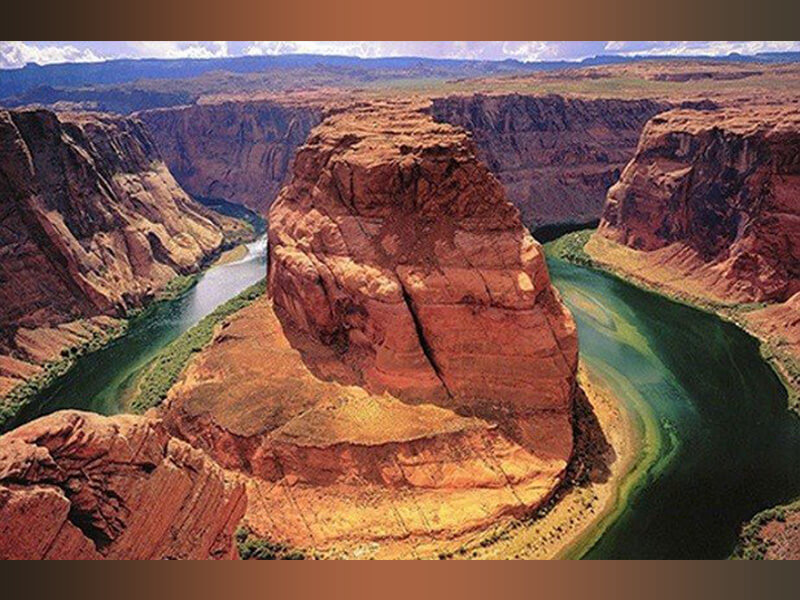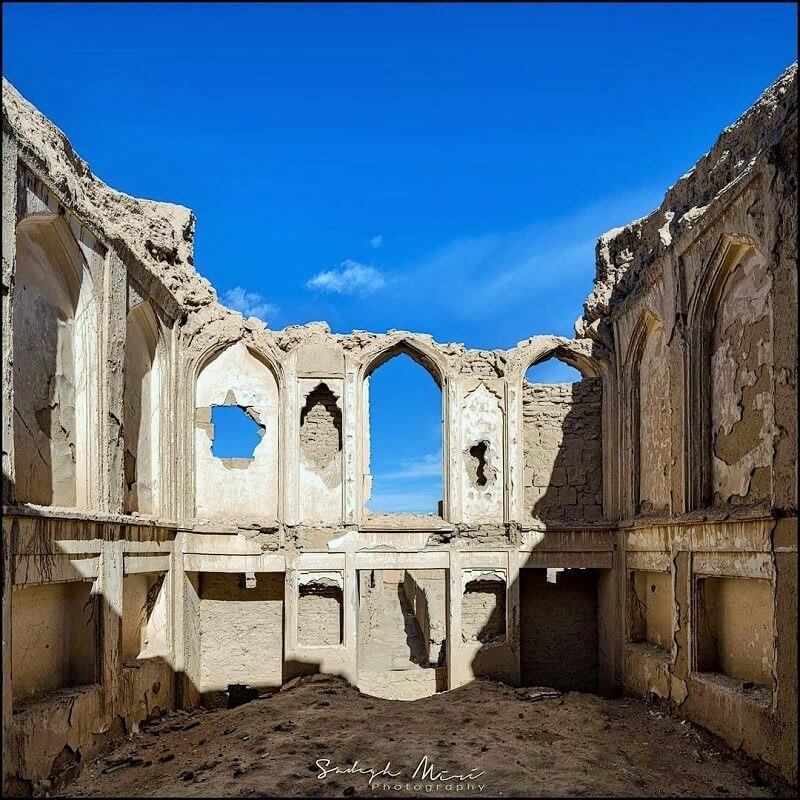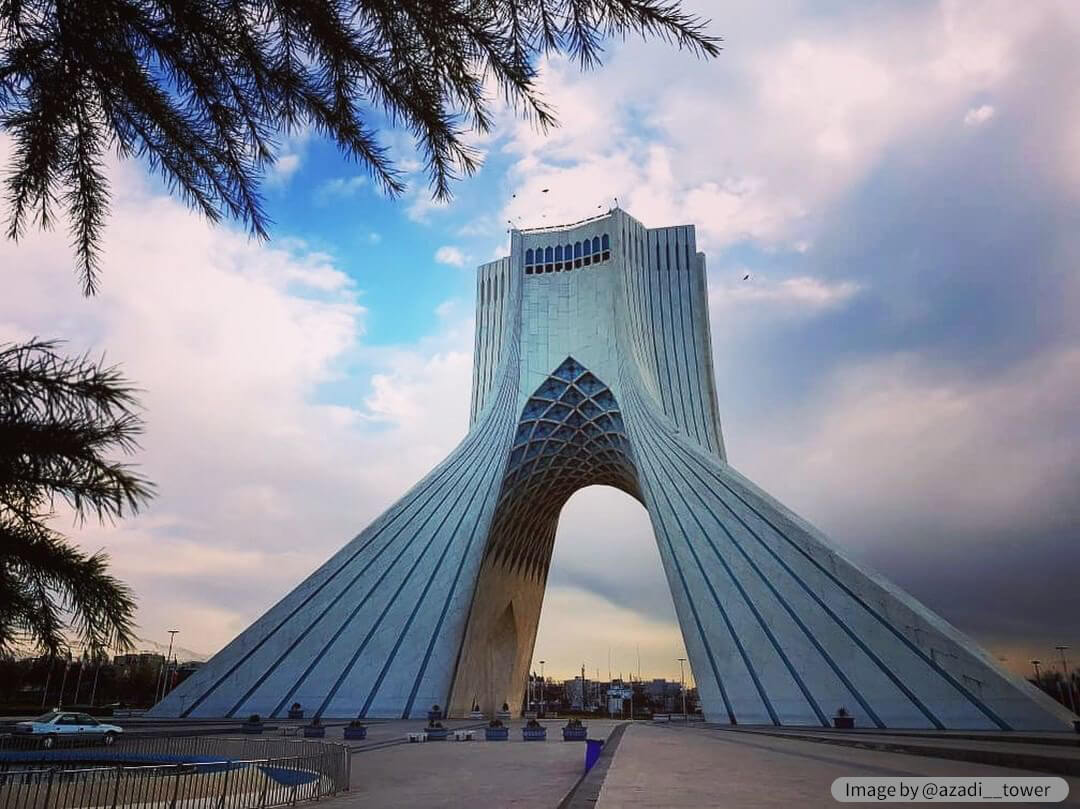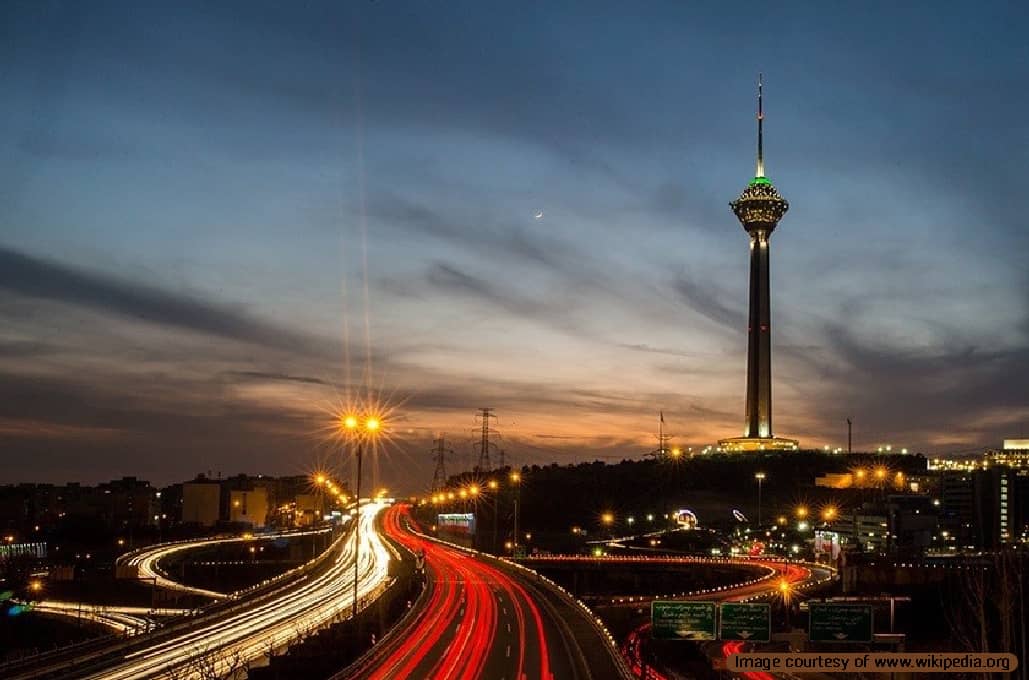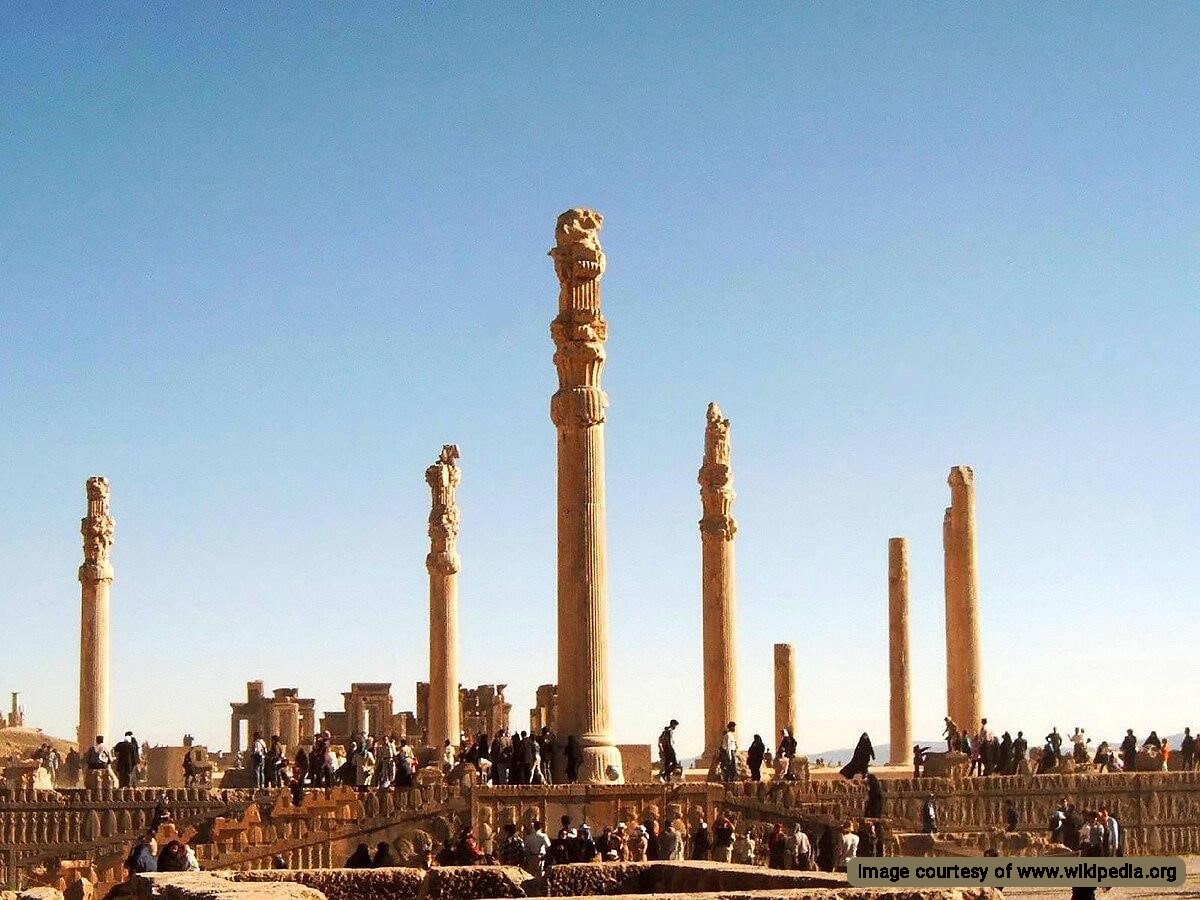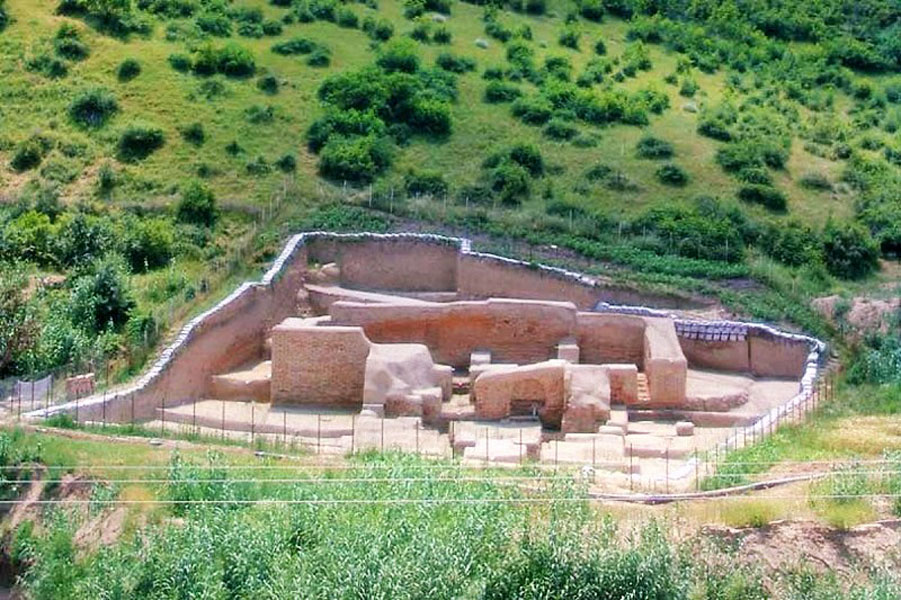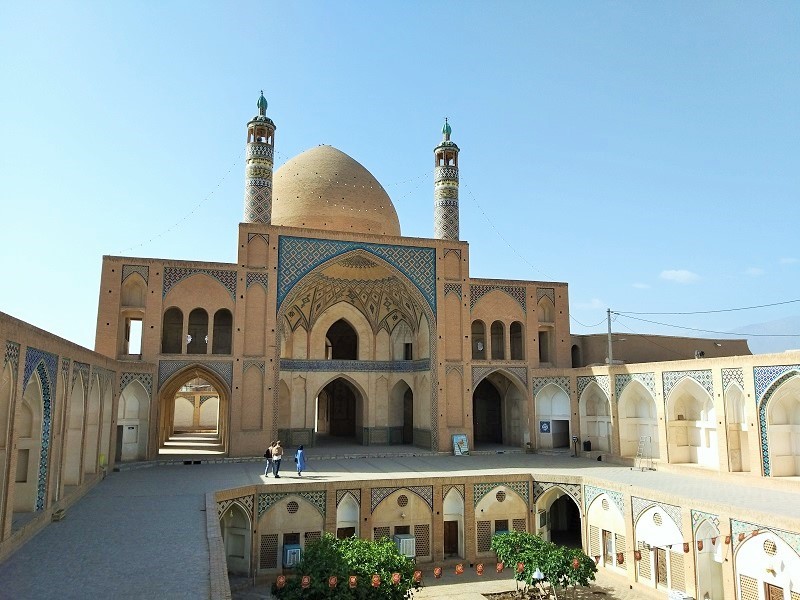
Kashan is one of the cities of Isfahan province. It is considered a center of civilization and culture. This beautiful city has more than 1700 historical monuments and 313 registered as national heritage sites. One of the prized monuments of this city is the Agha Bozorg Mosque in Kashan. This mosque is one of the most glorious historical buildings of the Qajar period.
The construction of this mosque started during the rule of Mohammad Shah Qajar and was completed in the early years after Naseruddin Shah was crowned. In 1778, an earthquake with a magnitude of 6.2 Ms struck Kashan. It seems that the Agha Bozorg Mosque stands over the ruins of that earthquake. The 40-pillar Shabestan (prayer hall) of the mosque was built before the construction of the dome. This Shabestan was built on the remains of the Khanghah (gathering place of Sufis), the mosque, and the tomb of Khajeh taj Ad-din.
Features and Decorations of The Agha Bozorg Mosque in Kashan
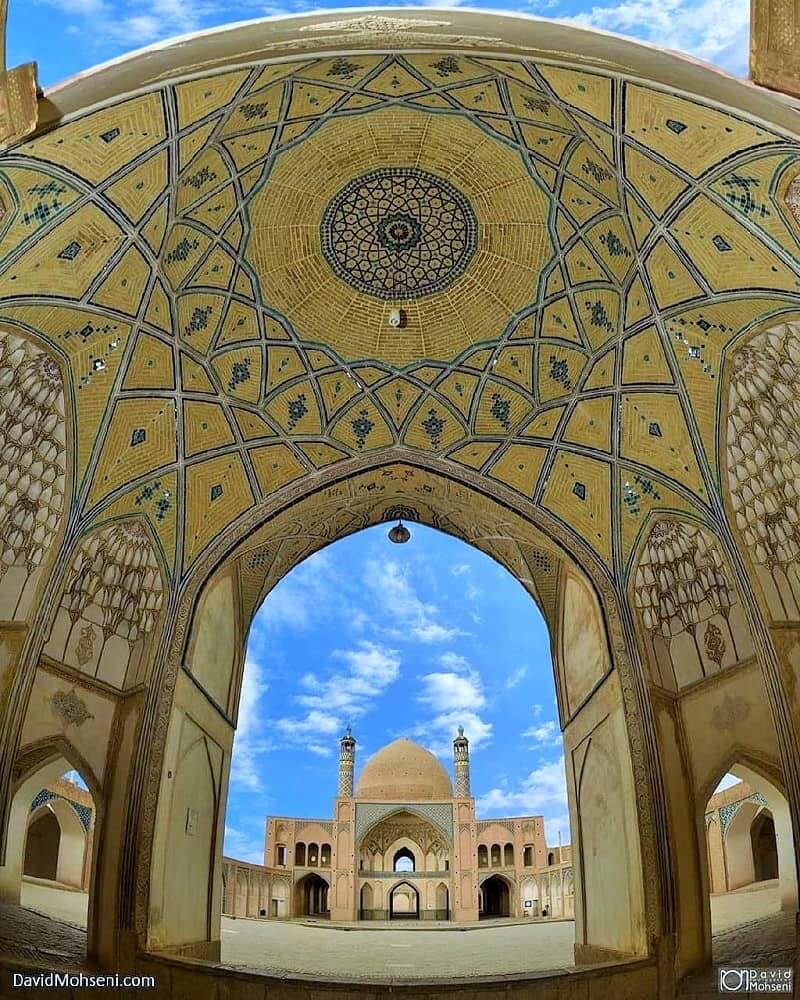
The most interesting features of the mosque are the entrance portal, the entrance vestibule, the central courtyard, and the prayer halls. Even though it is not customary to have decorated portals for mosques, it is present in Agha Bozorg Mosque. The mosque entrance has two door leaves decorated with carvings, Girih patterns (sets of interconnected geometric patterns), and studs. The number of studs used to decorate the doors is the same as the number of verses of the Quran.
After passing through the entrance, we get to the vestibule. The vestibule of the mosque is a covered area located past the entrance. The most important function of a vestibule is dividing the entrance path into two or more sections. There are rooms designated for Khadims (Caretakers) of the mosque on the sides of the vestibule of the Agha Bozorg Mosque.
This mosque has two courtyards, one on the lower floor (underground) and the other on the floor above. The lower yard, also known as the sunken garden courtyard, has a fountain in the center and four gardens on the sides. There are chambers, a Shabestan, and a cellar built all around the courtyard. The courtyard on the upper floor is called the ground floor courtyard. There are stairs to get to and from the lower courtyard at the four corners of this yard.
In addition, Agha Bozorg Mosque has another courtyard. This yard was used to store the snow cleared from the dome and is located behind the domed chamber. There is a well in the middle of the yard, which is used to store the snow. To clear snow from the dome, a chain is tied to the crown (top of the dome). The chains wipe the dome and push the snow down to the courtyard.
In addition, Agha Bozorg Mosque has three Shabestans on the north, south, and west side of the site. The west Shabestan was added later and is not part of the original structure. The materials used to construct the Shabestans in Agha Bozorg Mosque are brick and stone.
The west Shabestan has 20 free-standing columns and 30 brick arches. The north Shabestan utilized in the winter has brick and stone columns. Also, south Shabestan is decorated with lights emanating through openings in its roof. This Shabestan serves as the main prayer hall of the mosque.
The mosque building is relatively simple, with decorations such as plasterwork, painting, muqarnas work, tile work, etc. In other words, the decorations of the mosque are not excessive.
Architectural style of Agha Bozorg Mosque
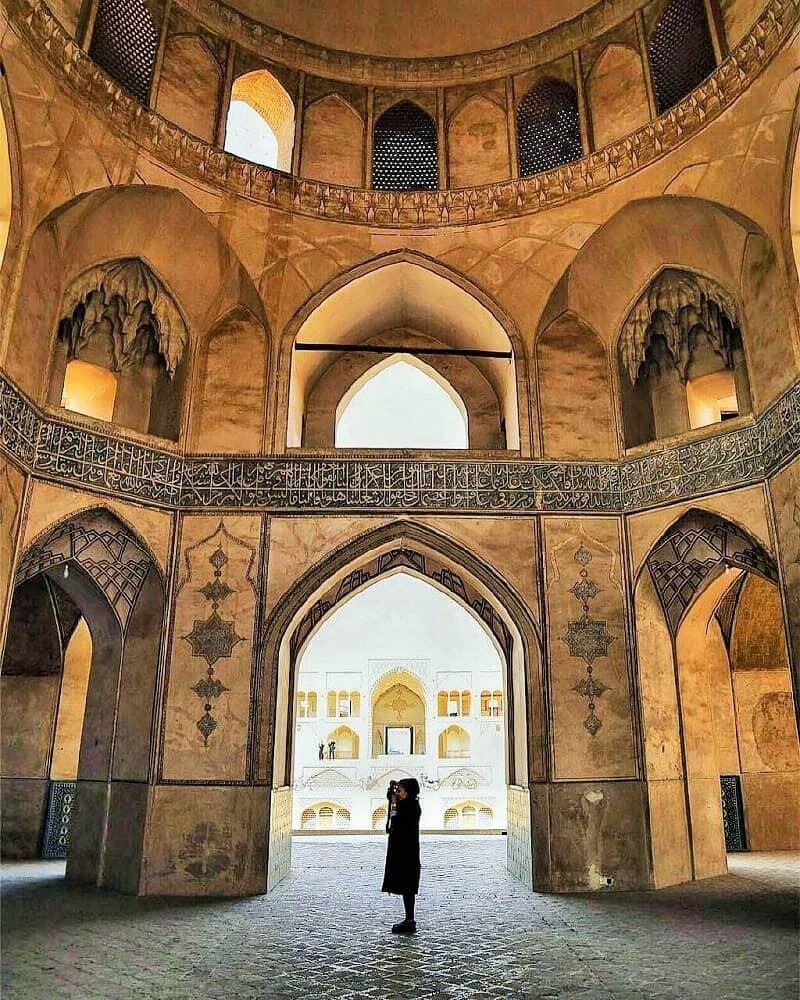
One of the prominent features of this mosque’s architecture is the dome, which is supported by eight pillars. In the architecture of most mosques, the south of the dome is usually designated for the construction of a mihrab. In the Agha Bozorg Mosque, the dome’s south, southeast, and west parts are open, and the mihrab is located in the southwest. This plan was designed to allow the flow of air inside the dome. But because the western part of the dome has 40 pillars, it is cut off from the outside. As a result, the airflow is poor.
The Agha Bozorg Mosque in Kashan has five floors. One of them is the cellar. It is one of the principles of traditional Iranian architecture. Building a cellar has many advantages, including the following:
- Saving materials
- Access to aqueduct water
- Fortification against earthquakes
Another principle of Iranian architecture is the inclusion of windcatchers. The windcatchers of the Agha Bozorg Mosque in Kashan let the airflow inside the rooms. This is how the rooms are cooled in the summer.
In addition, the four principles of Islamic architecture in building construction are:
- Rasmi Bandi: decorative vaulting that uses geometric patterns to decorate the under the dome
- Girih Tiles: a decorative feature that utilizes sets of five tiles to create a girih (knot)
- Yazdi Bandi: Ornament feature used to decorate under the domes
- Muqarnas: another style of vault decoration also known as honeycomb vaulting
All these principles have been implemented in the construction of Agha Bozorg Mosque in Kashan. Using these four principles directs a visitor’s gaze to the mosque dome. There are also signs of western architecture in the mosque. But overall, most patterns and architectural styles belong to the Safavid era.
Do Not Miss Visiting This Attraction
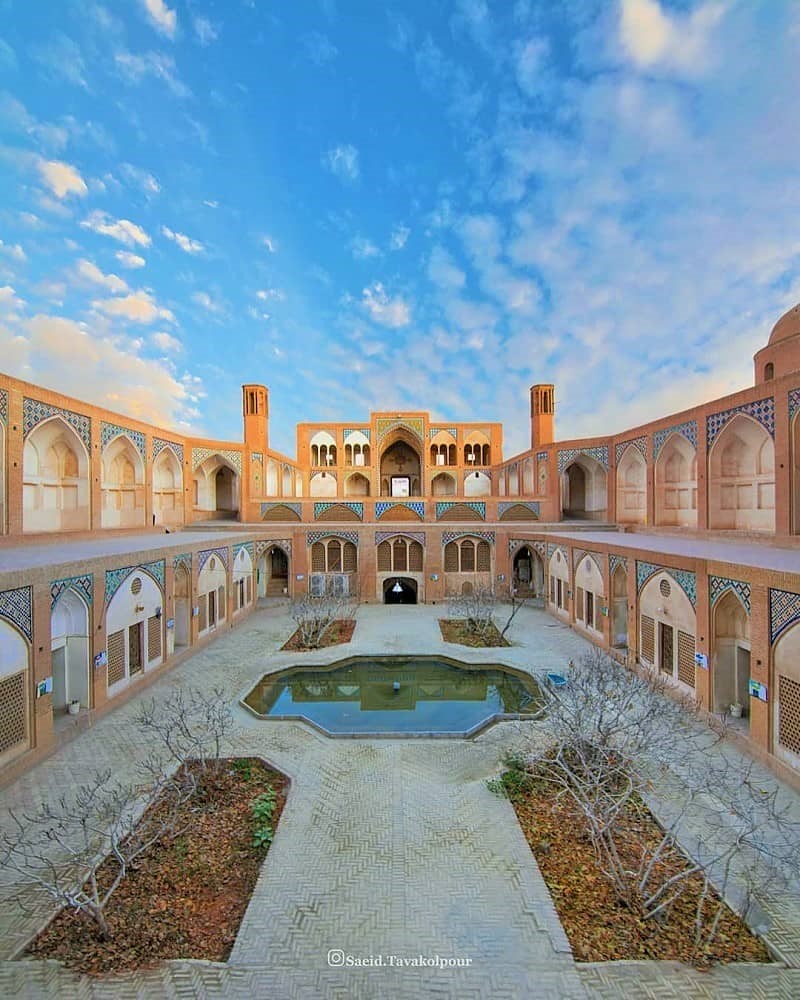
Mosques are examples of excellence in Iranian architecture. Agha Bozorg Mosque in Kashan is a unique example of traditional Iranian architecture. If you visit Kashan city on International Iran tours, don’t miss exploring the Agha Bozorg Mosque in Kashan. It is a unique destination.
Destination Iran recommends reading about Kashan tourist attractions before your trip to learn more about the city and make beautiful memories.
In what period and in which city was the Agha Bozorg Mosque built?
Agha Bozorg Mosque is located in Kashan city. Like most of the sights of Kashan, this building belongs to the Qajar period. You can see the exact location of this mosque below:
Frequently Asked Questions About Agha Bozorg Mosque
To find the answers to any other questions, contact us through the comments section of this post. We will answer your questions as soon as possible.
What are the decorations on the entrance doors of the Agha Bozorg Mosque?
The entrance door of the mosque has two leaves and exquisite decorations. Girih patterns, carving and studs have been used to decorate the door. The number of studs on the doors equals the number of Quranic verses.
What three essential principles of Iranian architecture were observed in constructing Agha Bozorg Mosque?
Traditionally, Iranian architects have followed certain principles to adapt to Iran’s climate. Three important principles have been considered in constructing Agha Bozorg Mosque:
• Saving materials
• Access to aqueduct water
• Fortifying the building against earthquakes
What are the four principles of Islamic architecture used in Agha Bozorg Mosque?
• Rasmi Bandi: decorative vaulting that uses geometric patterns to decorate the under the dome
• Girih Tiles: a decorative feature that utilizes sets of five tiles to create a girih (knot)
• Yazdi Bandi: Ornament feature used to decorate under the domes
• Muqarnas: another style of vault decoration also known as honeycomb vaulting
How is snow removed from the dome of the Agha Bozorg Mosque in Kashan?
A chain is tied to its crown to remove the snow from the dome, and the snow is wiped off by rotating the chains across the dome. The snow falls onto the second courtyard of the mosque. This yard is behind the dome house with a well in the middle where the snow is dumped.






